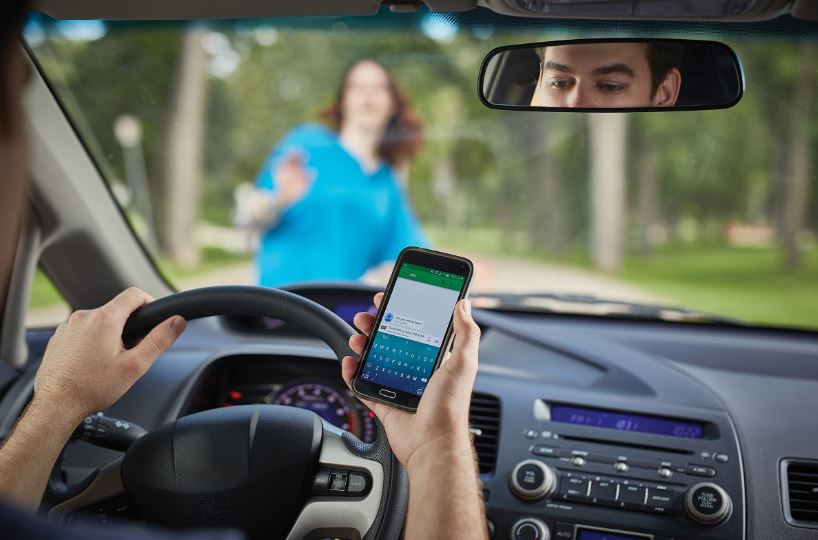Why Distracted Driving Beats DUIs for Causing Vehicle Wrecks
Few experiences are worse than getting involved in a car crash. Before the collision, you feel that sudden drop in your stomach when you realize you’re about to make violent contact with another careening vehicle.
Often, the collision is just the beginning. A blog post from the law offices of Ketterman, Rowland, & Westlund of San Antonio puts it best.
“Everything in your life changes when you become the victim of an auto accident. The physical impacts are instantaneous and are immediately followed by the emotional turmoil of having your life turned upside-down.”
Unfortunately, truck and car collisions are common. Every year, an average of 6 million vehicle crashes happen, resulting in millions of injuries and hundreds of thousands of fatalities.
In an effort to try to reduce the distress caused by these accidents, researchers have analyzed millions of vehicle collisions to isolate the causes. Several years ago, driving while intoxicated was the number-one cause of crashes in the US.
But lately, the number of wrecks caused by drunk driving has fallen compared to the number of violent incidents that result from distracted driving. Why is this?
Distracted Driving: An Epidemic
Distracted driving is a surprisingly growing problem throughout the US. Roughly a third of all vehicle crashes have been directly tied to one or more drivers being distracted at the wheel. Unfortunately, nearly 10 percent of these events end in at least one fatality.
Distracted driving is anything that takes your attention away from the road while you’re behind the wheel. Common examples include:
- Cell phone use, including texting, calling, and browsing the web
- Talking to others in the car
- Applying makeup
- Reaching around the vehicle
- Eating
- Adjusting the radio or digital music
Why It’s So Common
The statistics behind distracted driving are shocking. Given so many injuries and fatalities, it makes you wonder why people would allow themselves to do it.
The reasons vary, but they’re fairly simple. Take a look.
Distraction without Realization
Distracted driving entails more behaviors than you might realize. There are three types of distracted driving:
- Cognitive: Becoming mentally distracted from operating the vehicle. Usually, you’re stressed or emotionally compromised because of family, personal, or work-related issues. These emotions can prevent you from giving your full focus to the road.
- Visual: Something that gets in the way of your seeing the road. It could be a GPS attached to the windshield, an obstruction on your dashboard, or your choice to look down in order to change the radio station or CD player.
- Manual: Taking one or both hands off the wheel to do something else, such as applying makeup, eating, drinking water, or grabbing your phone.
Texting is generally regarded as the most dangerous distraction. “It combines all three types of distraction,” explains a CDC report on motor vehicle safety.
“When you send or read a text message, you take your eyes off the road for about 5 seconds, long enough to cover the length a football field while driving at 55 mph.”
Any of these behaviors are dangerous, and you might do them every day, probably without noticing it anymore. Being fully cognizant of your actions while driving could save your life.
Complacency
The average U.S. commute is about 25 minutes. When you spend that amount of time behind the wheel, and take the same route every day, it’s easy to become complacent about what you’re doing.
“We tend to underestimate the hazards of driving because we do it so often and it’s a critical part of daily life, but we shouldn’t take our safety for granted,” Dr. Sandhya Nagubadi, an internal medicine physician at an Illinois hospital, told AHCHealtheNews.com.
People often forget they’re operating a piece of heavy machinery that has the power to do serious damage on the road if it’s not carefully handled.
Teens Especially Misunderstand the Risks
Drivers under the age of 20 have the highest risk of getting into a wreck because of distracted driving. The CDC report on motor vehicle safety shows that 9 percent of all vehicle fatalities involved distracted driving.
Teens are much more likely to use their phone while driving. Nearly half of all high school students admitted to texting or emailing while they were driving.
Unfortunately, this increases with their likelihood to drink and drive and not wear their seat belts. Research shows that teens don’t fully understand the risks of distracted driving.
“Studies consistently reveal no safety effect associated with traditional driver education,” write the authors of a study led by Bruce G. Simons-Morton of the National Institute of Child Health and Human Development. Part of the problem is developmental.
Teenagers need time to develop fully and grasp the risks. “It may take only a few hours behind the wheel for most novices to develop reasonable vehicle management skills, but safe driving judgment, as with all complex activities, comes only with experience,” says Dr. Simons-Morton.
He also says that parents need to be better role models to their kids by putting down their phones, wearing seat belts, and avoiding any kind of intoxication before getting behind the wheel.

